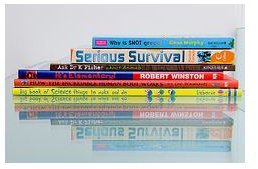Tips for Using Reciprocal Teaching With Struggling Readers
The Four Steps of Reciprocal Teaching
**
Reciprocal teaching has four steps.
Summarizing: After struggling readers read a section of the text, the teacher asks them to summarize the material. A good method for summarizing in a class setting is the Think, Pair, Share method. Each student reads, thinks about the summary, turns to a neighbor, and shares her ideas. If you are working in a remedial reading classroom, the student can share his summary with you.
Question generating: In this step, students create their own questions to go with the text. Then they check if they can answer their own questions. Teachers encourage students to ask all levels of questions from simple fact-finding questions to ones where students would need to infer information or draw conclusions to answer them.
Clarifying: Students need to understand that comprehension DOES NOT mean they can repeat the words without understanding. Can they paraphrase and use their own words to retell what the text is saying? Can they define new terms and concepts? Ask your struggling readers why they may be having trouble understanding this text, such as difficult vocabulary. You can help them recognize these problems and give them strategies when they encounter these difficulties in reading.
Predicting: Students hypothesize what will happen next or what the following section of text discusses in the last step of reciprocal teaching. They may use clues from their previous reading or text clues such as titles and subheadings. Then students start reading the next section to see if their hypotheses are correct.
Using Reciprocal Teaching With Remedial Reading Students
Reciprocal teaching is a great method to use with struggling readers. They can use it in the classroom during social studies and science lessons and at home when they’re reviewing the text. Here are some tips for using this instructional strategy.
- Make it fun. Students reading below grade level often find reading a chore. Don’t force them to use an instructional strategy that adds more stress or work to their day, so make it fun! For example, during the question generating phase, take turns asking each other questions. For every correct answer, enjoy a small reward of a couple raisins or a quick game of I SPY (using pictures in the text book.) During the prediction phase, write predictions on brightly colored post-it notes, and put a sticker next to each correct one.
- Make it easy. Start with paragraphs (or even smaller amounts of text) if necessary. Reciprocal teaching can be used after one sentence, paragraph, section, or even book, depending on the difficulty of the text and the ability of the student.
- Model the instructional strategy. The first few times you teach this strategy–you do the work, and ask struggling readers to check if you did it correctly. They love to “correct” the teacher. If you make mistakes on purpose, like you forget to generate questions, they will catch you. Talk through the process, so they can understand how reciprocal teaching works and how it can help them comprehend the text.
This post is part of the series: Instructional Strategies for Students Reading Below Grade Level
Many teachers use instructional strategies, such as reciprocal teaching or think-pair-share, with their students. But sometimes with students reading below grade level, it is hard for them to read the text AND use a strategy to help them comprehend. Instructional strategies can benefit all.
